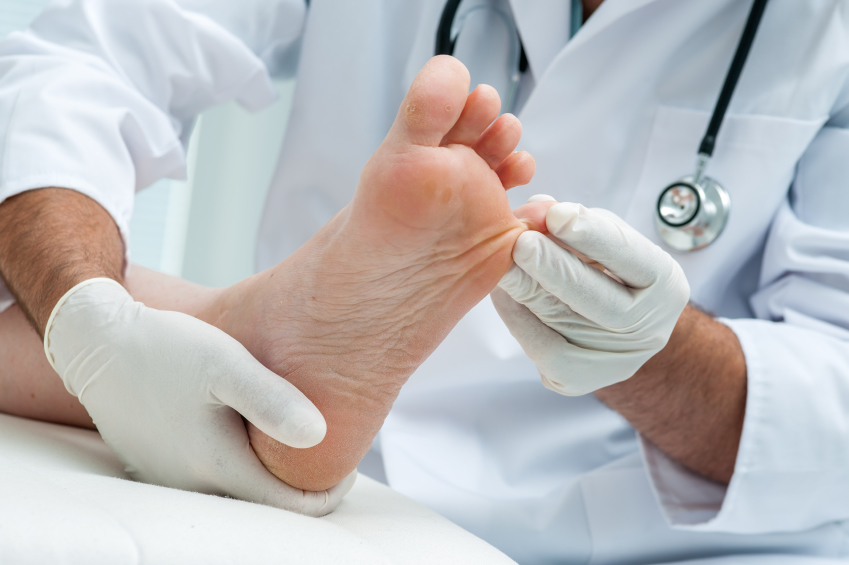Diabetic foot wounds are a serious complication for individuals living with diabetes, often resulting from poor circulation and nerve damage. These wounds can quickly escalate if left untreated, leading to infections, reduced mobility, or even amputation. Orthopedic Treatment for Diabetic Foot Wound Care plays a critical role in managing these risks while promoting effective healing. TEC Orthopedics provides specialized care that focuses on infection control, tissue preservation, and restoring mobility, giving patients a comprehensive path to recovery.
Understanding Diabetic Foot Wounds
Diabetic foot wounds develop due to a combination of factors associated with diabetes. Peripheral neuropathy can cause patients to lose sensation in their feet, making it difficult to notice injuries or irritation. Poor blood circulation slows the natural healing process, allowing minor wounds to worsen rapidly. Symptoms often include swelling, redness, drainage, and persistent pain, and the presence of infection can further complicate recovery. Without timely orthopedic care, diabetic foot wounds may lead to severe complications, including gangrene and limited mobility.
Role of Orthopedic Treatment in Wound Care
Orthopedic Treatment for Diabetic Foot Wound Care focuses on addressing the underlying issues that contribute to wound formation and delayed healing. Infection management is a primary concern, as diabetic patients are more prone to bacterial infections that can spread rapidly. Orthopedic specialists employ advanced wound cleaning techniques, antimicrobial treatments, and careful monitoring to prevent infection progression. Tissue preservation is another essential aspect, ensuring that bone, skin, and muscle structures remain intact. Orthopedic interventions also include strategies to offload pressure from affected areas, reducing further injury and supporting proper healing.
TEC Orthopedics Approach to Diabetic Foot Wound Care
TEC Orthopedics provides personalized treatment plans designed to meet the unique needs of each patient. Every case begins with a thorough assessment that evaluates wound severity, circulation, mobility, and musculoskeletal health. Advanced diagnostic tools help guide precise interventions, ensuring optimal outcomes. Treatment plans often combine orthopedic procedures, wound care therapies, and rehabilitative exercises. By addressing both immediate wound concerns and underlying structural issues, TEC Orthopedics ensures a holistic approach that maximizes healing potential and reduces the likelihood of recurrence.
Mobility Restoration and Rehabilitation
Maintaining mobility during treatment is crucial for both healing and quality of life. Orthopedic Treatment for Diabetic Foot Wound Care emphasizes exercises and therapies that strengthen foot and leg muscles, enhance circulation, and promote functional independence. Physical therapists collaborate with orthopedic specialists to design customized rehabilitation programs, incorporating gait training, range-of-motion exercises, and balance activities. These interventions not only support wound recovery but also improve overall stability and reduce the risk of falls or future injuries.
Patient-Centered Care at TEC Orthopedics
TEC Orthopedics prioritizes patient-centered care, recognizing the emotional and physical challenges of managing diabetic foot wounds. Beyond medical treatment, the team provides education on proper foot care, lifestyle adjustments, and strategies to prevent complications. Patients receive continuous support throughout the healing process, including follow-up appointments, progress tracking, and adaptive interventions as needed. By focusing on both physical and emotional well-being, TEC Orthopedics ensures patients feel empowered and confident in their recovery journey.
Preventing Recurrence and Long-Term Foot Health
Long-term foot health is a critical component of effective orthopedic care for diabetic patients. Orthopedic Treatment for Diabetic Foot Wound Care includes guidance on daily foot inspection, appropriate footwear, blood sugar management, and nutrition to support healing. Regular check-ups allow specialists to detect potential issues early, preventing small wounds from developing into severe complications. TEC Orthopedics emphasizes preventive care and education, helping patients maintain independence, mobility, and overall health well beyond initial wound treatment.
Takeaway
Orthopedic Treatment for Diabetic Foot Wound Care provides a comprehensive solution for managing a complex and potentially dangerous condition. TEC Orthopedics combines advanced infection management, tissue preservation, and mobility restoration to ensure patients receive holistic care. By addressing both the immediate needs of the wound and underlying musculoskeletal challenges, orthopedic specialists help patients achieve faster healing, prevent complications, and regain confidence in daily activities. Choosing TEC Orthopedics means access to personalized, compassionate care dedicated to improving quality of life and long-term foot health.
FAQ Section
What is orthopedic treatment for diabetic foot wounds?
Orthopedic Treatment for Diabetic Foot Wound Care involves medical interventions that promote healing, prevent infections, preserve tissue, and restore mobility for patients with diabetic foot wounds.
How does TEC Orthopedics manage infections in diabetic foot wounds?
TEC Orthopedics uses advanced cleaning techniques, antimicrobial therapies, and close monitoring to control infections and prevent their spread, ensuring safe and effective healing.
How long does healing take with proper orthopedic care?
Healing time depends on wound severity, circulation, and overall health. With consistent orthopedic care, many patients experience significant improvement within weeks to months, while also reducing the risk of future complications.
Can orthopedic care prevent amputation in diabetic patients?
Yes. By managing infections early, preserving tissue, and promoting proper healing, orthopedic treatment greatly reduces the likelihood of amputation in patients with diabetic foot wounds.
What steps can patients take at home to support foot wound healing?
Patients should inspect their feet daily, wear appropriate footwear, manage blood sugar levels, follow care instructions from orthopedic specialists, and attend regular follow-up appointments to monitor progress.






